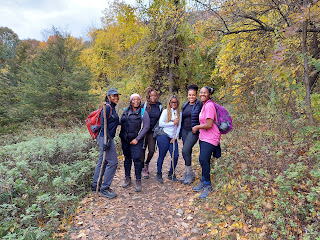Fire Restrictions in Effect? Learn How to Camp Without a Campfire
It's mid-July, and while hot, humid weather is typical during summer, the country is heating up at record-breaking levels! So, we continue our series on all things heat-related, and it's time we talk about fire bans.
But first, a story...in a recent Facebook post, a fellow camper shared the following:
"Unfortunately, I learned an expensive lesson last night after getting a beautiful cooking fire going…use the correct resource for fire ban orders for your location…I used the wrong resource (thinking it was the correct one) and ended up with no dinner and a $330 citation from the US Park Service. We’re unpacking the butane stoves for breakfast then off to see the Grand Canyon."
Yep, you read that right, a THREE HUNDRED DOLLAR fine. It was an honest mistake that the Forest Ranger could have easily excused with a warning, but they didn't, so let's make sure you don't fall victim to the same.
High Fire Danger: A high fire danger level indicates significant fire risk. Under high fire danger conditions, restrictions on campfires and open flames will likely be more stringent. Campfire bans or restrictions may be in effect, allowing only the use of controlled cooking equipment like portable stoves. It's crucial to comply with these restrictions to prevent accidental wildfires.
- A full fire ban, also known as a total fire ban or complete fire restriction, prohibits all open flames, including campfires, charcoal grills, and any form of burning. This ban is typically implemented during extreme fire danger conditions when any type of fire poses a significant risk.
- A campfire ban specifically prohibits campfires and bonfires, but it may still allow the use of portable stoves or grills that use propane, butane, or other controlled fuel sources. This type of ban is often implemented during moderate to high fire risk periods.
- Under a stove-only ban, campfires and open flames are prohibited, but portable camping stoves or grills are still permitted. Stove-only bans are usually imposed when fire danger is moderate, but authorities want to reduce the risk associated with uncontrolled open flames.
- An area-specific fire ban restricts open flames within a specific geographic area, such as a national park, state park, or forest. This ban may vary depending on the conditions and regulations set by the land management agency responsible for the area. When planning your camping trip, it is essential to check for any specific area-wide bans.
- In certain regions, seasonal fire bans may occur during a specific time of the year when fire risk is historically high. These bans aim to prevent wildfires during seasons characterized by dry conditions, strong winds, or increased visitor activity. Examples include bans during the summer or in areas prone to drought.
- Pack alternative cooking equipment, such as a portable camping stove or a grill. Numerous options are available, including propane, butane, or solar-powered stoves. Choose one that suits your needs and follows the regulations set by the fire ban.
- Consider incorporating cold meals into your camping menu. Sandwiches, wraps, salads, and other dishes that don't require cooking can still be delicious and satisfying. This can save you the hassle of setting up cooking equipment and minimize the risk of accidental fires.
- Bring along a variety of no-cook snacks such as trail mix, granola bars, fresh fruits, and vegetables. These items provide quick energy and are easy to consume on the go, allowing you to stay nourished throughout your camping adventure.
- Utilize prepackaged meals that can be prepared with hot water. These meals are specially designed for outdoor enthusiasts and offer a convenient solution for enjoying warm food without the need for a fire.
- Consider bringing ready-to-eat meals such as canned soups, stews, or pre-cooked meals that can be enjoyed straight from the can or heated with a portable stove. Just remember to pack a can opener!
- Respect the Environment: When camping without a fire, it's crucial to respect the environment and leave no trace. Pack out all your trash, minimize your impact on natural resources, and follow any additional guidelines or regulations provided by the land management authorities.



.png)


Comments
Post a Comment